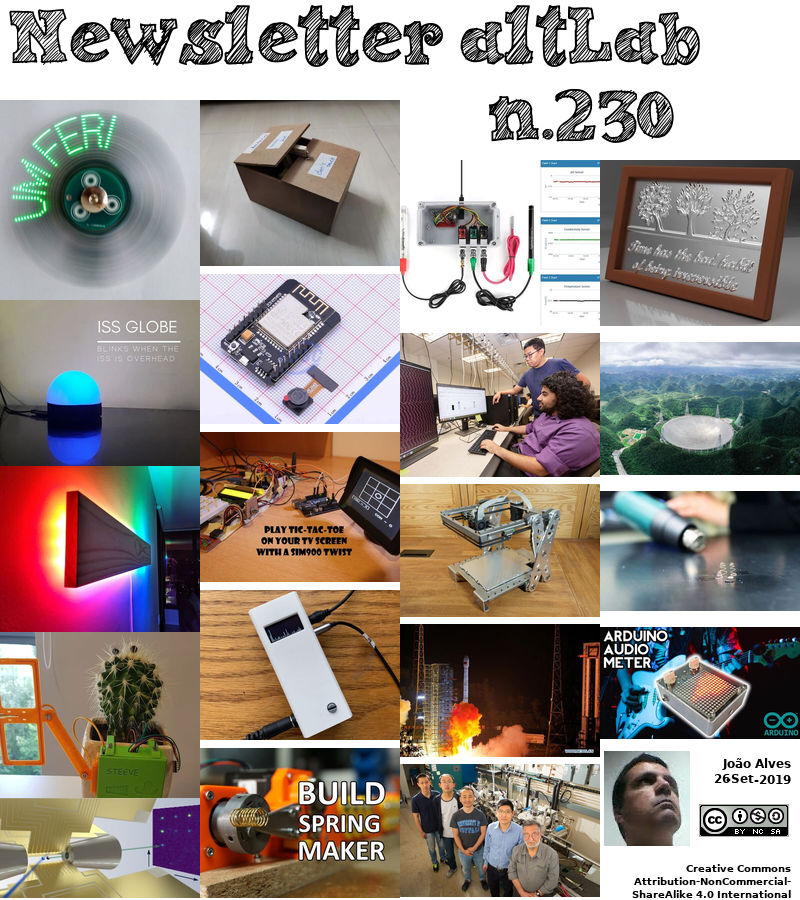2019-09-26 - Nº 230
Editorial
Esta é a Newsletter Nº 230 que se apresenta com o mesmo formato que as anteriores. Se gostar da Newsletter partilhe-a!
Todas as Newsletters encontram-se indexadas no link.
Esta Newsletter tem os seguintes tópicos:
Faz hoje anos que nascia, em 1754, Joseph Proust. Este químico francês provou que as quantidades relativas de qualquer elemento constituinte de um composto químico puro permanecem invariantes, independentemente da fonte do composto, fornecendo assim evidências cruciais para apoiar a "lei das proporções definidas" de John Dalton, que contém esses elementos em qualquer composto está presente em proporção fixa entre si.
Faz também anos hoje que nascia, em 1854, Edward Bausch. Este inventor norte-americano desenvolveu microscópios e instrumentos ópticos.
Esta semana que passou ficámos a saber que o telescópio gigantesco chinês encontra-se quase pronto. O maior rádio-telescópio de prato único do mundo está a preparar-se para abrir para astrónomos em todo o mundo, inaugurando uma era de observações sensíveis que podem ajudar na busca de ondas gravitacionais e sondar as misteriosas explosões fugazes de radiação conhecidas como rajadas rápidas de rádio.
Também esta semana a NASA detectou pulsos magnéticos misteriosos em Marte. Os eventos nocturnos estão entre os resultados iniciais da sonda InSight, que também encontrou pistas de que o planeta vermelho pode hospedar um reservatório global de água líquida bem abaixo da superfície. À meia-noite de Marte, o campo magnético do planeta vermelho às vezes começa a pulsar de maneiras nunca antes observadas. A causa é actualmente desconhecida.
Por fim, a NASA publicou um artigo de um pesquisador da Google que afirma ter alcançado a supremacia quântica, um importante marco inicial no campo da computação quântica, tendo o mesmo posteriormente sido removido. A Google, assim como a IBM, a Microsoft, a Intel e outras grandes empresas e startups de tecnologia, estão a trabalhar para construir computadores quânticos, um novo tipo de computador baseado numa arquitectura totalmente diferente da dos computadores clássicos. Embora este anúncio não seja oficial, há muito que cientistas e especialistas do sector esperam que a Google construa um computador quântico capaz de atingir esse marco - um computador quântico executando um cálculo que um computador clássico não pode.
Na Newsletter desta semana apresentamos diversos projetos de maker. São também apresentadas as revistas newelectronics de 24 de Setembro e a MagPI Nº86 de Setembro.
 João Alves ([email protected])
João Alves ([email protected])
O conteúdo da Newsletter encontra-se sob a licença  Creative Commons Attribution-NonCommercial-ShareAlike 4.0 International License.
Creative Commons Attribution-NonCommercial-ShareAlike 4.0 International License.
Novidades da Semana

Gigantic Chinese telescope opens to astronomers worldwide
"FAST has superior sensitivity to detect cosmic phenomena, including fast radio bursts and pulsars. The world’s largest single-dish radio observatory is preparing to open to astronomers around the world, ushering in an era of exquisitely sensitive observations that could help in the hunt for gravitational waves and probe the mysterious fleeting blasts of radiation known as fast radio bursts. The Five-hundred-meter Aperture Spherical Radio Telescope (FAST) in southern China has just passed a series of technical and performance assessments, and the Chinese government is expected to give the observatory the final green light to begin full operations at a review meeting scheduled for next month. “We do not see any roadblocks for the remaining transition,” says Di Li, the chief scientist of FAST. “I feel both excited and relieved.” The complex project has not been without challenges — it has a radical design and initially struggled to attract staff, in part because of its remote location. But the pay-off for science will be immense." [...]
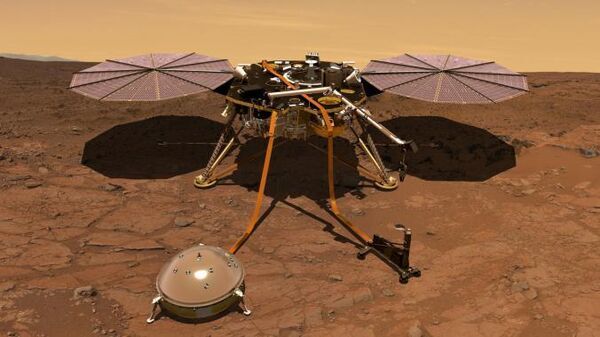
Mysterious magnetic pulses discovered on Mars
"The nighttime events are among initial results from the InSight lander, which also found hints that the red planet may host a global reservoir of liquid water deep below the surface. AT MIDNIGHT ON Mars, the red planet’s magnetic field sometimes starts to pulsate in ways that have never before been observed. The cause is currently unknown. That’s just one of the stunning preliminary findings from NASA’s very first robotic geophysicist there, the InSight lander. Since touching down in November 2018, this spacecraft has been gathering intel to help scientists better understand our neighboring planet’s innards and evolution, such as taking the temperature of its upper crust, recording the sounds of alien quakes, and measuring the strength and direction of the planet’s magnetic field. As revealed during a handful of presentations this week at a joint meeting of the European Planetary Science Congress and the American Astronomical Society, the early data suggest the magnetic machinations of Mars are marvelously mad." [...]
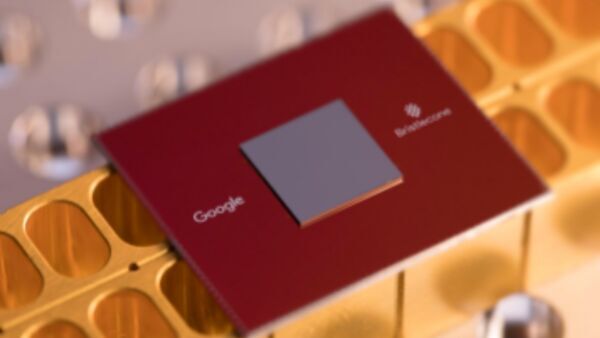
Google Says It's Achieved Quantum Supremacy, a World-First: Report
"A Google researcher’s paper claiming to have achieved quantum supremacy, a major early milestone in the field of quantum computing, appeared on a NASA website this week before being removed, the Financial Times reports. Google, as well as IBM, Microsoft, Intel, and other large tech companies and startups, have been working to build quantum computers, a new kind of computer based on an entirely different architecture than classical computers. Though this announcement is not official, scientists and industry experts have long expected Google to build a quantum computer capable of reaching this milestone—a quantum computer performing a calculation that a classical computer can’t. You can read our primer on quantum computers here and our primer on quantum supremacy here. But the gist is, classical computers are systems where problems are abstracted onto a system of two-position switches called bits (ones and zeros) that interact through the rules of logic. Quantum computers are instead based on quantum bits, or qubits, that are also two-position switches, but they interact via the same rules that subatomic particles follow, called quantum mechanics." [...]
Outras Notícias

One Giant Leap for Lunar Landing Navigation
"When Apollo 11’s lunar module, Eagle, landed on the Moon on July 20, 1969, it first flew over an area littered with boulders before touching down at the Sea of Tranquility. The site had been selected based on photos collected over two years as part of the Lunar Orbiter program. But the “sensors” that ensured Eagle was in a safe spot before touching down – those were the eyes of NASA Astronaut Neil Armstrong. “Eagle’s computer didn’t have a vision-aided system to navigate relative to the lunar terrain, so Armstrong was literally looking out the window to figure out where to touch down,” said Matthew Fritz, principal investigator for a terrain relative navigation system being developed by Draper of Cambridge, Massachusetts. “Now, our system could become the ‘eyes’ for the next lunar lander module to help target the desired landing location.” This week, that system will be tested in the desert of Mojave, California, on a launch and landing of Masten Space Systems’ Xodiac rocket. The rocket is scheduled to take off Wednesday, Sept. 11." [...]
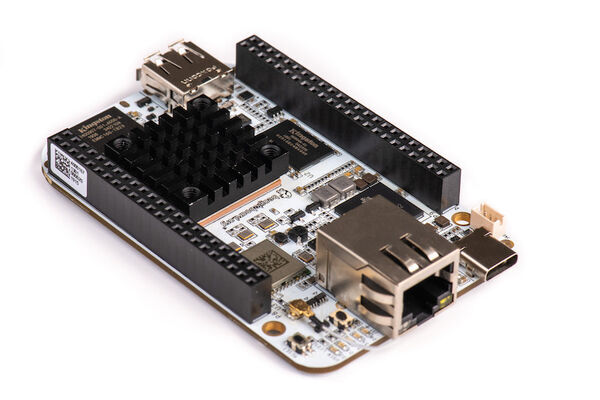
BeagleBoard.org® Launches BeagleBone® AI, Offering a Fast Track to Getting Started with Artificial Intelligence at the Edge
"The BeagleBoard.org® Foundation today announces general availability of the newest, fastest, most powerful BeagleBoard.org® BeagleBone® low cost development board yet, and it’s driving a whole new AI revolution. Built on our proven open source Linux approach, BeagleBone® AI fills the gap between small single board computers (SBCs) and more powerful industrial computers. Leveraging the Texas Instruments Sitara™ AM5729 processor, developers have access to powerful machine learning capabilities with the ease of the BeagleBone® Black header and mechanical compatibility. BeagleBone® AI makes it easy to explore how artificial intelligence (AI) and machine learning can be used in everyday life. Through BeagleBone® AI, developers can take advantage of the TI C66x digital-signal-processor (DSP) cores and embedded-vision-engine (EVE) cores on the Sitara AM5729 processor. Machine learning is supported by an optimized TI Deep Learning (TIDL) software framework and pre-installed software tools." [...]

Arm Mbed OS 5.14 released
"In the three years since we released Mbed OS 5, we’ve focused our engineering efforts on adding the feature set an IoT operating system requires. We’ve invested in connectivity, security, device management and storage. That investment has paid off. Mbed OS and Pelion Device Management now have most of the features required to develop, deploy and manage an IoT device. In recent months, our engineering focus has shifted from feature development toward feature refinement and optimizations that will improve your developer experience. Many of these improvements come from direct engagement with Arm customers who are looking to deploy IoT devices at scale." [...]

Found: Three Black Holes on Collision Course
"Astronomers have spotted three giant black holes within a titanic collision of three galaxies. The unusual system was captured by several observatories, including three NASA space telescopes. "We were only looking for pairs of black holes at the time, and yet, through our selection technique, we stumbled upon this amazing system," said Ryan Pfeifle of George Mason University in Fairfax, Virginia, the first author of a new paper in The Astrophysical Journal describing these results. "This is the strongest evidence yet found for such a triple system of actively feeding supermassive black holes." The system is known as SDSS J084905.51+111447.2 (SDSS J0849+1114 for short) and is located a billion light years from Earth. To uncover this rare black hole trifecta, researchers needed to combine data from telescopes both on the ground and in space." [...]

NASA Visualization Shows a Black Hole’s Warped World
"This new visualization of a black hole illustrates how its gravity distorts our view, warping its surroundings as if seen in a carnival mirror. The visualization simulates the appearance of a black hole where infalling matter has collected into a thin, hot structure called an accretion disk. The black hole’s extreme gravity skews light emitted by different regions of the disk, producing the misshapen appearance. Bright knots constantly form and dissipate in the disk as magnetic fields wind and twist through the churning gas. Nearest the black hole, the gas orbits at close to the speed of light, while the outer portions spin a bit more slowly. This difference stretches and shears the bright knots, producing light and dark lanes in the disk." [...]
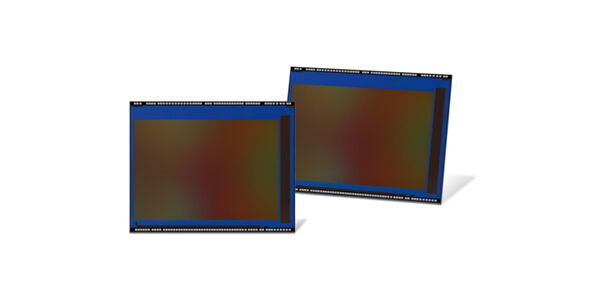
Samsung Introduces Industry’s First 0.7μm-pixel Mobile Image Sensor
"Samsung ISOCELL Slim GH1 offers 43.7 megapixels in an extremely compact package, ideal for slim full-display smartphones Samsung Electronics, a world leader in advanced semiconductor technology, today introduced the industry’s first 0.7-micrometer (μm)-pixel image sensor, the 43.7-megapixel (Mp) Samsung ISOCELL Slim GH1. Thanks to advanced ISOELL Plus technology, the new ultra-high-resolution GH1 image sensor embraces 43.7-million 0.7μm-sized pixels in a super-small package, providing the optimum solution for slim full-display devices. “Samsung has been stepping up in pixel technology innovation from the industry’s first 1.0μm-pixel image sensor, to most recently, 0.8μm ultra-high-resolution sensors at 64Mp and 108Mp,” said Yongin Park, executive vice president of the sensor business at Samsung Electronics. “We are pleased to deliver yet another breakthrough with the industry’s first 0.7μm pixel image sensor, the ISOCELL Slim GH1 that will enable sleeker and more streamlined designs as well as excellent imaging experiences in tomorrow’s smartphones.” The ISOCELL Slim GH1 is the industry’s first mobile image sensor to adopt the smallest pixel size in the industry at 0.7μm. By utilizing ISOCELL Plus, Samsung’s latest pixel isolation technology that minimizes color cross-talk and optical loss, the tiny 0.7μm pixels are able to absorb sufficient light information to produce bright and vivid photographs. In low-light environments, the GH1 makes use of pixel-merging Tetracell technology that enables higher light sensitivity equivalent to that of a 1.4μm-pixel image sensor." [...]

What’s in a Name? D-Wave Unveils Next-Generation System Name, Announces First Next-Generation System Customer & Demonstrates Lower-Noise Performance
"D-Wave Systems Inc., the leader in quantum computing systems, software, and services, today announced that its next-generation quantum system will be named Advantage™. Advantage will be available in the Leap™ quantum cloud service in mid-2020. Designed to speed the development of commercial quantum applications, the Advantage quantum system will power a new hardware and software platform that will accelerate and ease the delivery of quantum computing applications. Reflecting years of customer feedback, the platform captures users’ priorities and business requirements and will deliver significant performance gains and greater solution precision. Since announcing the roadmap for the Advantage quantum system in February 2019, D-Wave has rolled out hardware and software innovations, including access through Leap to a lower-noise D-Wave 2000Q™ processor and the Hybrid™ open-source workflow platform. Los Alamos National Laboratory (LANL), a long-time customer of D-Wave’s, today also announced that they have signed a contract to upgrade to the Advantage quantum system on-premise when it is available." [...]
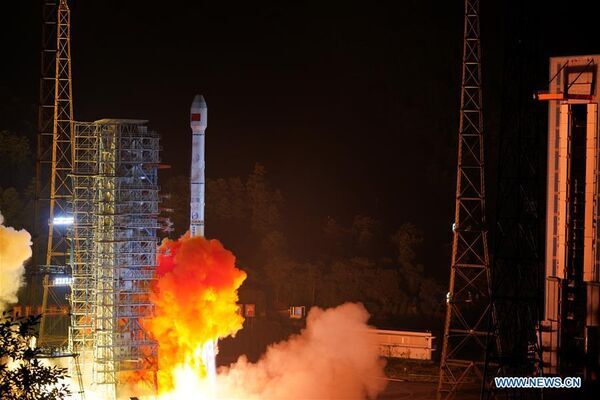
Two more satellites launched into China’s Beidou navigation fleet
"China added two more satellites to the country’s Beidou navigation fleet — an analog to the U.S. military’s GPS network — with a successful Long March 3B rocket launch Sunday. The Long March 3B launcher lifted off from the Xichang space center in southwestern China’s Sichuan province at 2110 GMT (5:10 p.m. EDT) Sunday, according to the China Academy of Launch Vehicle Technology, or CALT, a state-owned aerospace contractor. According to CALT, the Long March 3B and its Yuanzheng upper stage delivered two Beidou navigation satellites into the targeted medium Earth orbit. The 184-foot-tall (56-meter) Long March 3B rocket flew southeast from the Xichang launch base and shed its four liquid-fueled boosters nearly two-and-a-half minutes into the mission. Seconds later, the Long March 3B’s core stage shut down and separated. The Long March 3B’s hydrazine-fueled second stage fired next, followed by a burn of the rocket’s cryogenic hydrogen-fueled third stage before deployment of the Yuanzheng upper stage with the two Beidou navigation satellites." [...]
Ciência e Tecnologia

Physicists mash quantum and gravity and find time, but not as we know it
"A University of Queensland-led international team of researchers say they have discovered “a new kind of quantum time order”. UQ physicist Dr Magdalena Zych said the discovery arose from an experiment the team designed to bring together elements of the two big – but contradictory – physics theories developed in the past century. “Our proposal sought to discover: what happens when an object massive enough to influence the flow of time is placed in a quantum state?” Dr Zych said. She said Einstein’s theory described how the presence of a massive object slowed time. “Imagine two space ships, asked to fire at each other at a specified time while dodging the other’s attack,” she said. “If either fires too early, it will destroy the other.” “In Einstein’s theory, a powerful enemy could use the principles of general relativity by placing a massive object – like a planet – closer to one ship to slow the passing of time.” “Because of the time lag, the ship furthest away from the massive object will fire earlier, destroying the other.” Dr Zych said the second theory, of quantum mechanics, says any object can be in a state of “superposition” “This means it can be found in different states – think Schrodinger’s cat,” she said." [...]
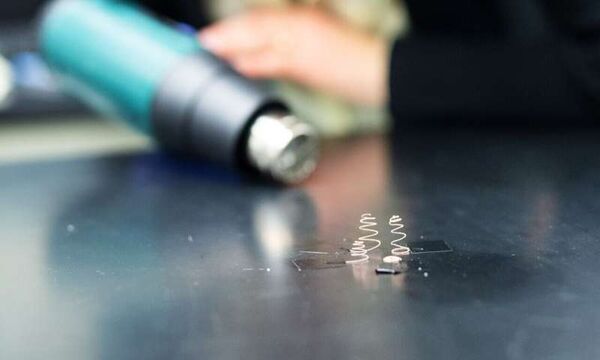
Researchers recreate living 3D displays
"It is safe to say that 3D displays do not necessarily occur in nature – unless one considers the cephalopod, which includes the squid and octopus, as a living 3D display which can morph its structure and create complex shapes and textures for camouflage purposes or drag control (see video). Now, a research team from the University of Iowa and the University of Illinois at Urbana-Champaign is developing a smart skin inspired by the cephalopod which can be used in 3D displays, as interfaces for the visually impaired, and to help reduce drag on marine vehicles. In a study published in Advanced Materials Technologies, the team, led by Caterina Lamuta, assistant professor of mechanical engineering at the University of Iowa, as well as Sameh Tawfick and Nancy Sottos, professors at the University of Illinois at Urbana-Champaign, found that using twisted and coiled polymer fibers to create artificial muscles could produce lightweight smart skins that are capable of fine motion and shape modulation. In cephalopods, voxels are controlled by the animal’s papillae muscles which allow their skin to take numerous forms, protrude outward, and take new shapes in fractions of seconds (see video, see video). The team took inspiration from the cephalopods’ papillae to reproduce digital texture voxels (DTVs) from twisted spiral artificial muscles (TSAMs). With an input voltage of only 0.2 V/cm, TSAMs provide a stroke of 2000% and a roughness profile ranging from a few microns to one centimeter." [...]
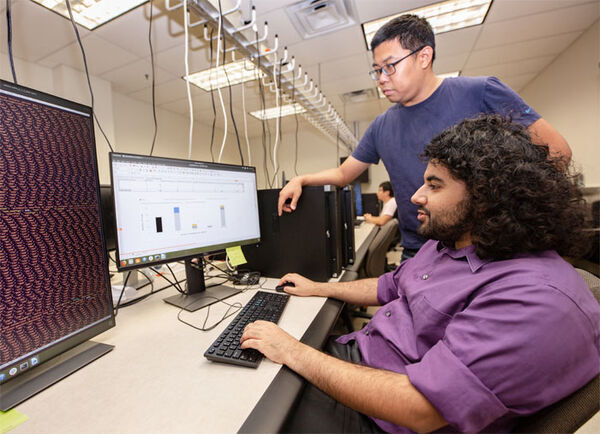
Team’s New Tool Advances the Art of Busting Hidden Software Bugs
"Computer Scientists Create Framework That Tracks Down Hard-to-Find Variability Bugs One of the biggest challenges to fixing software bugs can be finding them. With support from the National Science Foundation, computer scientists at The University of Texas at Dallas are going after some of the hardest-to-find errors, called variability bugs, which appear only when software is configured to work with certain hardware. The researchers presented a framework they developed to detect variability bugs at the recent Association for Computing Machinery (ACM) Joint European Software Engineering Conference and Symposium on the Foundations of Software Engineering in Estonia. Variability bugs cannot typically be detected using off-the-shelf software analysis tools, said Dr. Shiyi Wei, assistant professor of computer science in the Erik Jonsson School of Engineering and Computer Science. “It is hard to test and analyze software for variability bugs because of all of the different hardware involved,” Wei said. “You have to test many software configurations to find these bugs, and it’s not possible to test all the configurations.” A software program can have millions of configurations that allow it to operate among different models and brands of computers and devices." [...]

Researchers flip how electrical signals move liquid droplets
"The advance – using an electrical push rather than a pull – could lead to more reliable medical diagnostic tools Matthew Chin | August 26, 2019 When medical laboratories analyze blood samples for signs of disease, they sometimes use instruments that rely on a technology called digital microfluidics. The technique uses electric signals to pull tiny droplets of the sample across a surface so they can be analyzed. One drawback of the process is that the electric signals tend to damage the surface that the droplets travel over, which can cause the device to fail unexpectedly or deteriorate over time. Now, a research team led by UCLA engineers and scientists has demonstrated that digital microfluidic devices could be made much more durable if they use the electric signals to push, instead of pull, the droplets over the surface. A paper about the work was published in Nature. The advance could lead to more powerful and reliable analytical tools for biochemical laboratories and environmental monitoring." [...]
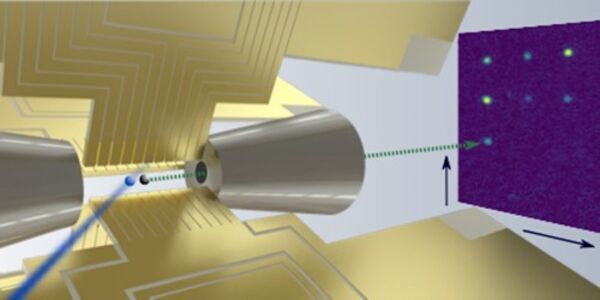
Researchers can now place single ions into solids
"New technique enables implantation of individual ions into crystals with an accuracy of 35 nanometers Modern electronics is based on doped semiconductors. To synthesize electronic components, dopant atoms such as aluminum or phosphorus are embedded into crystals of ultrapure silicon. This allows for tailoring semiconductor conductivity according to the desired application. In modern electronic computer processors, miniaturized to just a few nanometers, only less than ten dopant atoms are relevant for the functionality. Quantum components, which are used for novel quantum computers or quantum simulators, will go even one step further in that they require an array with only single dopant atoms in a high-purity crystal. Physicists at Johannes Gutenberg University Mainz (JGU) led by Professor Ferdinand Schmidt-Kaler now have developed a method to implant precise numbers of individual dopant ions into a solid crystal." [...]

Quantum destabilization of a water sandwich
"When a thin layer of water is squeezed between two hydrophobic surfaces, the laws of classical physics break down. From raindrops rolling off the waxy surface of a waterlily leaf, to the efficiency of desalination membranes, interactions between water molecules and water-repellent "hydrophobic" surfaces are all around us. The interplay becomes even more intriguing when a thin water layer becomes sandwiched between two hydrophobic surfaces, KAUST researchers have shown. In the early 1980s, researchers first noted an unexpected effect when two hydrophobic surfaces were slowly brought together in water. “At some point, the two surfaces would suddenly jump into contact—like two magnets being brought together,” says Himanshu Mishra from KAUST's Water Desalination and Reuse Center. Mishra’s lab investigates water at all length scales, from reducing water consumption in agriculture, to the properties of individual water molecules." [...]
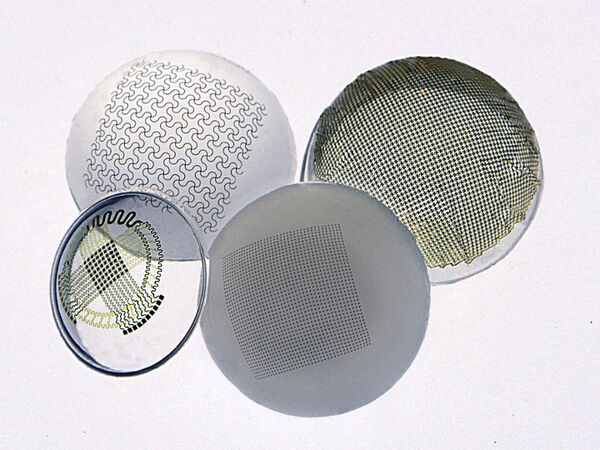
Researchers Report a New Way to Produce Curvy Electronics
"New Method Fills a Need in Emerging Applications for Electronic Devices Contact lenses that can monitor your health as well as correct your eyesight aren’t science fiction, but an efficient manufacturing method – finding a way to produce the curved lenses with embedded electronics – has remained elusive. Until now. A team of researchers from the University of Houston and the University of Colorado Boulder has reported developing a new manufacturing method, known as conformal additive stamp printing, or CAS printing, to produce the lenses, solar cells and other three-dimensional curvy electronics. The work, reported in the journal Nature Electronics, demonstrates the use of the manufacturing technique to produce a number of curvy devices not suited to current production methods. The work is also highlighted by the journal Nature. “We tested a number of existing techniques to see if they were appropriate for manufacturing curvy electronics,” said Cunjiang Yu, Bill D. Cook Associate Professor of Mechanical Engineering at the University of Houston and corresponding author on the paper." [...]
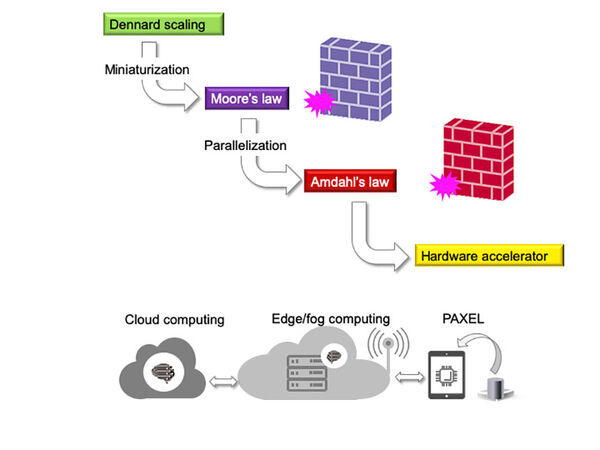
Using Light to Speed Up Computation
"A group of researchers in Japan has developed a new type of processor known as PAXEL, a device that can potentially bypass Moore’s Law and increase the speed and efficiency of computing. PAXEL, which stands for photonic accelerator, is placed at the front end of a digital computer and optimized to perform specific functions but with less power consumption than is needed for fully electronic devices. Metal-oxide semiconductor field-effect transistors are the basis for most integrated electronic circuits, but they are limited by Moore’s Law, which says the number of microprocessor chips on a single electronic circuit will double every two years. There is an inherent limit to this, though, based on the way the size of the microprocessor chips relates to the quantum mechanical nature of electrons. It is possible to partially overcome the Moore’s Law problem by using parallel processing, in which multiple processors carry out simultaneous computations. This approach does not work for every application, however." [...]
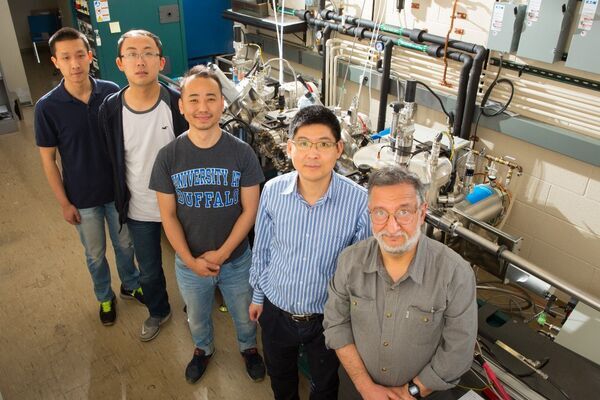
‘Valley states’ in this super-thin material could potentially be used for quantum computing
"Physicists manipulate energy valleys in tungsten disulfide, with potential applications in quantum computing New research on two-dimensional tungsten disulfide (WS2) could open the door to advances in quantum computing. In a paper published Sept. 13 in Nature Communications, scientists report that they can manipulate the electronic properties of this super-thin material in ways that could be useful for encoding quantum data. The study deals with WS2’s energy valleys, which University at Buffalo physicist Hao Zeng, co-lead author of the paper, describes as “the local energy extrema of the electronic structure in a crystalline solid.” Valleys correspond with specific energies that electrons can have in a material, and the presence of an electron in one valley versus another can be used to encode information. An electron in one valley can represent a 1 in binary code, while an electron in the other can represent a 0. The ability to control where electrons might be found could yield advances in quantum computing, enabling the creation of qubits, the basic unit of quantum information. Qubits have the mysterious quality of being able to exist not just in a state of 1 or 0, but in a “superposition” related to both states." [...]

Quantum sensing on a chip
"Researchers integrate diamond-based sensing components onto a chip to enable low-cost, high-performance quantum hardware. MIT researchers have, for the first time, fabricated a diamond-based quantum sensor on a silicon chip. The advance could pave the way toward low-cost, scalable hardware for quantum computing, sensing, and communication. “Nitrogen-vacancy (NV) centers” in diamonds are defects with electrons that can be manipulated by light and microwaves. In response, they emit colored photons that carry quantum information about surrounding magnetic and electric fields, which can be used for biosensing, neuroimaging, object detection, and other sensing applications. But traditional NV-based quantum sensors are about the size of a kitchen table, with expensive, discrete components that limit practicality and scalability." [...]
Documentação
A documentação é parte essencial do processo de aprendizagem e a Internet além de artigos interessantes de explorar também tem alguma documentação em formato PDF interessante de ler. Todos os links aqui apresentados são para conteúdo disponibilizado livremente pelo editor do livro.
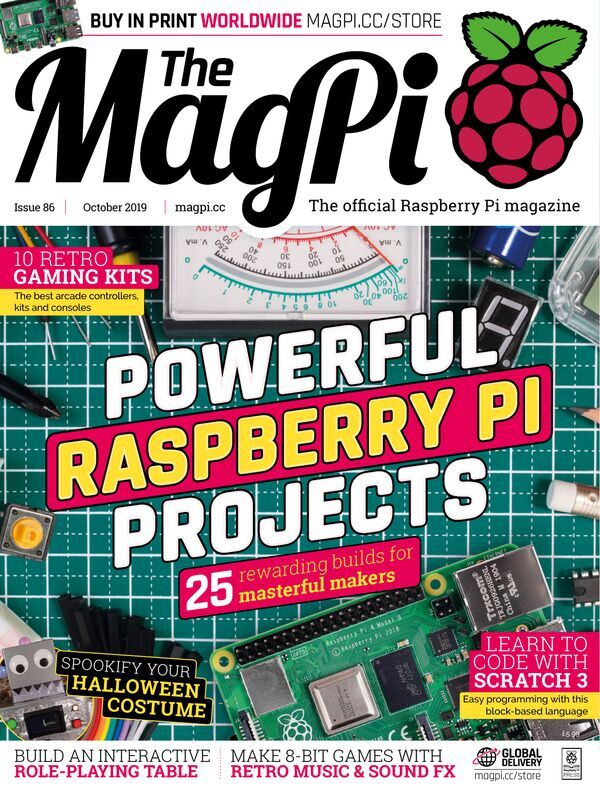
The MagPI 86
"Inside the latest issue of The MagPi you’ll find 25 Powerful Raspberry Pi projects that really show what our favourite computer is capable of. You’ll learn to make autonomous yachts, AI sorting machines, radical robots, medical projects, space rovers, football bots, and more. It’s the ideal next step for makers who’ve completed all the beginner projects, and now want a challenge. Plus! All this inside The MagPi issue #86: Make a frighteningly good Halloween costume Spookify your projects with these frighteningly good hacks Learn to code with Scratch 3 and SenseHAT Easy programming with the latest block-based programming language The 10 best retro-gaming kits and accessories Turn a Raspberry Pi into a games console, arcade machine and more How to control a low-cost robot Create code that’ll control the motors on a low-cost robot. All is explained in easy steps Remote control over the internet with VNC Viewer and VNC Server Access Raspberry Pi from anywhere in the world Make retro game music with PICO-8 How to make fantastic music and sound effects for your games The Dride Zero for Raspberry Pi dash-cam kit Learn about the Dride dash-cam using Raspberry Pi Take a tour of Stonehenge Skyscape The world’s most famous rocks are using Raspberry Pi to give tourists a virtual tour Plus!" [...]
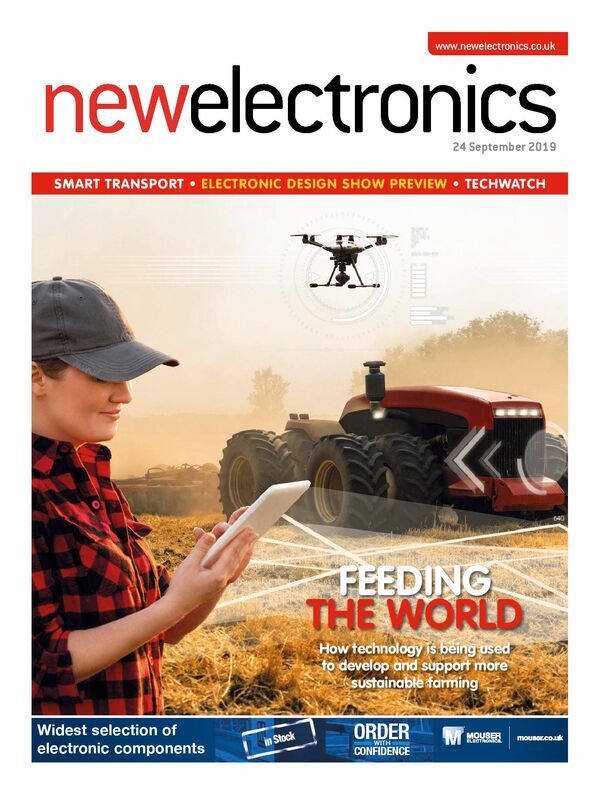
newelectronics 24 Setembro 2019
"New Electronics is a fortnightly magazine focusing on technological innovation, news and the latest developments in the electronics sector. Downloadable as a digital page turner or pdf file, or offered as a hard copy, the New Electronics magazine is available in a format to suit you. " [...]
Projetos Maker
Diversos Projetos interessantes.
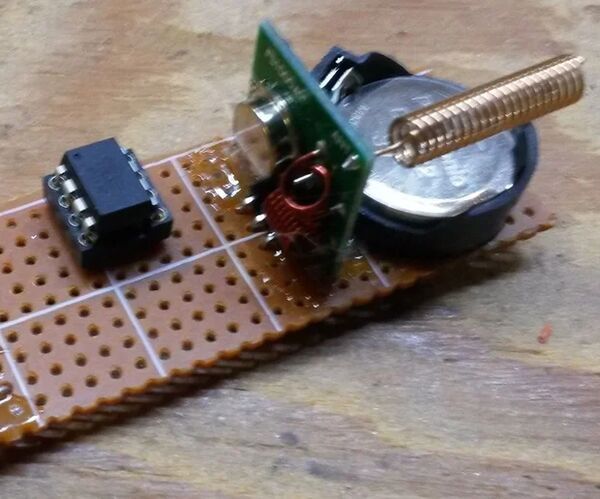
ATtiny85 RF Remote Control
"As I mentioned in a previous Instructable I recently started playing with some ATtiny85 chips. The initial project I had in mind was to make an RF remote control that could operate on a coin battery. I needed to go with a raw chip because none of the Arduinos I have can meet both the need for very low power and relatively small size. A modified LilyPad came close but the chip is a better answer. The idea was not so much to duplicate an existing remote but to demonstrate how you can make up your own transmitter and receiver set. Besides being a fun learning project, it also allows you to create your own secret code combination." [...]
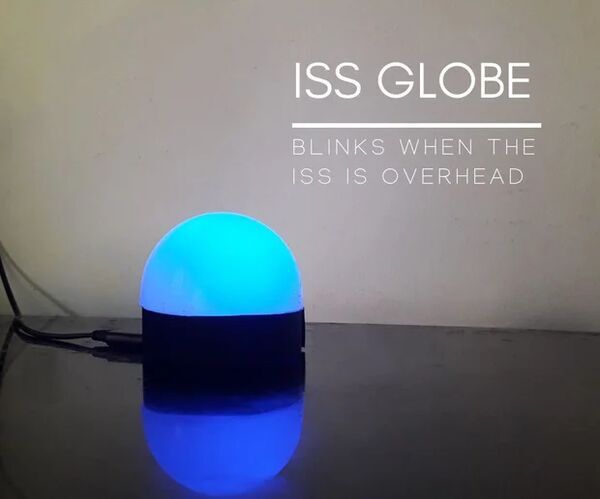
ISS Globe- Blinks When the ISS Passes Overhead
"Howdy! If you are interested in astronomy and always look up at the stars and not down at your feet, you'll surely know the ISS. The ISS or The International Space Station revolves around the earth around 16 times per day. Being an aerospace engineering student, I'm very keen about things like the ISS. If you're too, then I bet you'll love this project. Meet ISS Globe - a smart lamp that can notify you whenever the ISS is passing overhead." [...]

Connecting Your Plant to the Cloud
"In our office there is a cactus that wasn't getting the attention it deserved. Since I work at an IT company and wanted to experiment with LoRa, serverless solutions and AWS, I named our cactus Steeve and connected him to the cloud. You can now monitor Steeve from just about anywhere in the world using the webpage I made for him: Steeve's web interface. Supplies: 1 cactus / your favourite plant 1 Arduino MKR WAN 1300 (Arduino store) 1 868mHz/914mHz (depends on your location) antenna (Amazon) 1 LoRa Gateway when not in range of one (Amazon) 2 AA batteries 1 TMP102 sensor (Amazon) 1 soil moisture sensor (Amazon) Conductive cables (Amazon) soldering iron Battery holder (Amazon) case optional: 3D printer (if you can use a 3d printer then you don't need a battery holder or a case)" [...]

Arduino Audio Meter
"The Arduino Audio Meter is a programmable guitar pedal that works with the Arduino UNO board. It is able to read the incoming audio signal and create effects on the four 8x8 LED matrices. The project is Open Source and aimed for hackers, musicians and programmers that want to learn about DSP (digital signal processing), LEDs, guitar effects, and experiment without deep knowledge on electronics or programming. The project is designed to be fitted in a metal enclosure (Hammond 1590BBS) for better protection. There is a big library of codes available written in standard C that can inspire you. You can also post your creations in the Arduino Audio Meter online forum." [...]

IOT Application Anti-addiction BOX
"Design IdeaIn this project, I choose the electric solenoid lock as the box switch. If there is no press in keys for 3 minutes, the box will enter the sleep mode. Press the key 1 will wake up the box and send IoT order to open the box via the module OBLOQ. Once the IoT platform receives, it will decide to send or not send the order to open the box. When the box is awake, it will send the status data(Open/ Closed), the object thickness (with a ultrasonic distance detector) and the object weight (with a digital weight sensor). These key parameters can prevent some smart children cheating works." [...]
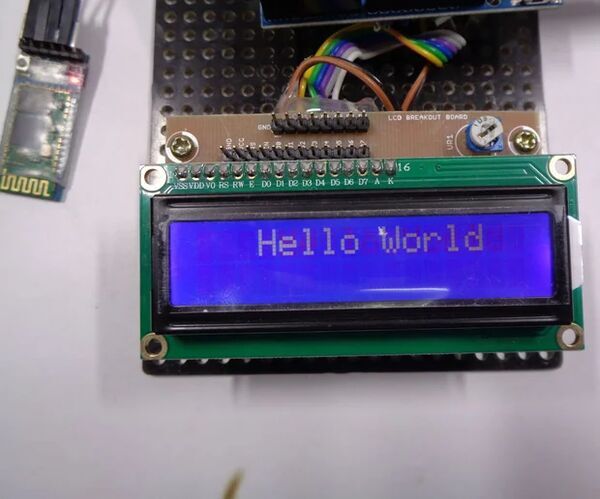
Wireless Electronic Notice Board Using Arduino
"Whats app guys.. In this tutorial, we are going to make a wireless electronic notice board using arduino and bluetooth. you are going to make it step by step manner. This will help us in passing any message almost immediately without any delay just by sending a SMS which is better and more reliable than the old traditional way of passing the message on notice board. This proposed technology can be used in colleges many public places, malls or big buildings to enhance the security system and also make awareness of the emergency situations and avoid many dangers. Using Bluetooth module display the message onto the display board." [...]
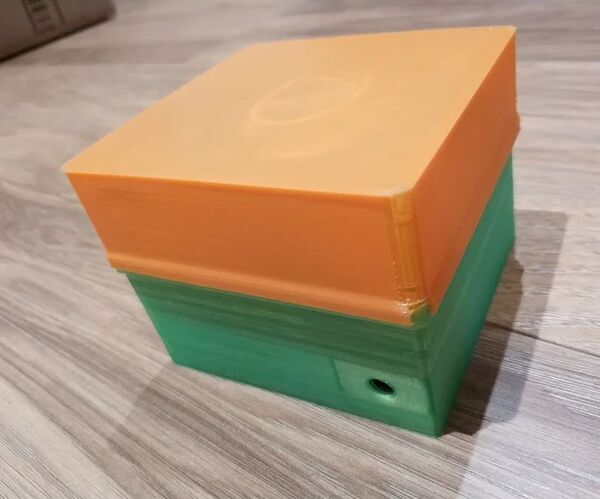
The Unpluginator - Self-Unplugging Useless Box
"This is an example of a Useless Machine. Its only purpose is to unplug its own power supply. It is largely 3D printed, with the necessary electronics. All drawing and simulation was done on Fusion 360, all programming was done in Arduino. Supplies: - 3D Printer - Arduino - Motor - Capacitors - Power supply + plug" [...]

Embossing Metal Foils With 3D Printed Stencils
"Being the curious human I am, I wanted to know more about metal foil embossing techniques, and what I found out was that the many amateurs or artists who deal with it, get some amazing results, of a captivating (and often intimidating) beauty. Seeing their work, I often asked myself if I could ever something like that? I think I'm not the only one. I have read many articles describing how to make embossing templates for paper or leather, but these templates cannot be used for embossing metal sheets (except for the thick ones) because the edges of these templates are sharp and the models are relatively deep, so they can break the foil very easily. Some links about making this kind of templates: How to turn a picture or a photo into a 3D model; How to make and use 3D-printed relief, intaglio and stencil plates for printmaking; 3D Print Your Own Leather Stamps; Embossing Plates - Bird Branch. In this article, I would like to present to you the methods I have tried to make the model from the main graphics, which is a digital modeling of an older idea of mine." [...]

Play Tic-Tac-Toe on Your TV Screen - with a SIM900 Twist
"Like playing tic-tac-toe, just call your Arduino and play. It’s been a while that I wanted to build a basic mobile device/phone with Arduino and SIM900. I finally got the time to play with it, and after few sleepless nights I came up with this great setup and code. I was able to detect an incoming call and play a ring tone using good old rtttl – which was a tricky thing on its own. Get and make a call. And the most cool feature, that was suggested by a good friend, is activating the DTMF detection." [...]
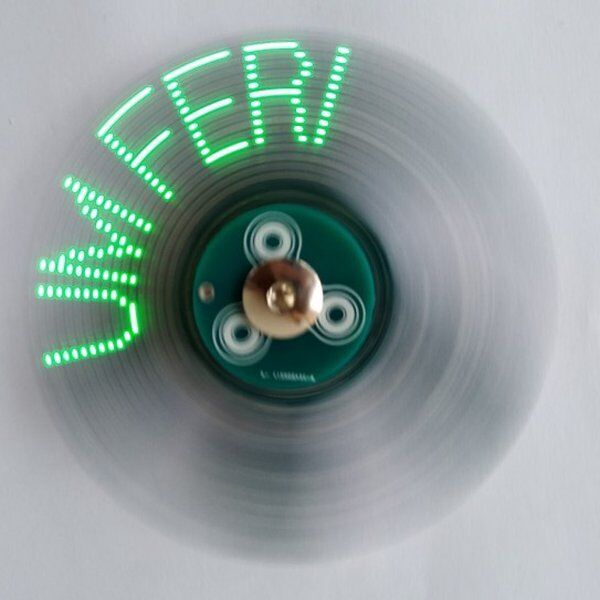
Persistence of Vision Fidget Spinner
"POV Fidget spinner which uses Enhanced PIC16 AngularTimer peripheral, Bluetooth Low Energy 4.2 link, LabVIEW PC application, touch button... This is a fidget spinner which uses Persistence of Vision effect which is an optical illusion whereby multiple discrete images blend into a single image in the human mind. The text or graphics can be changed via Bluetooth Low Energy link by using a PC application that I have programmed in LabVIEW or by using a freely available smartphone BLE app. One of the most important characteristics is that the displayed graphics doesnt depend on rotation velocity thanks to its innovative solution for keeping the track of rotation angle. Meaning that the displayed graphic is perceived the same at both, higher and lower rotational speeds (for instance, when the fidget spinner is slowing down when held in the hand). This is also one of the main difference between various POV device on the market (POV clocks, etc.)" [...]
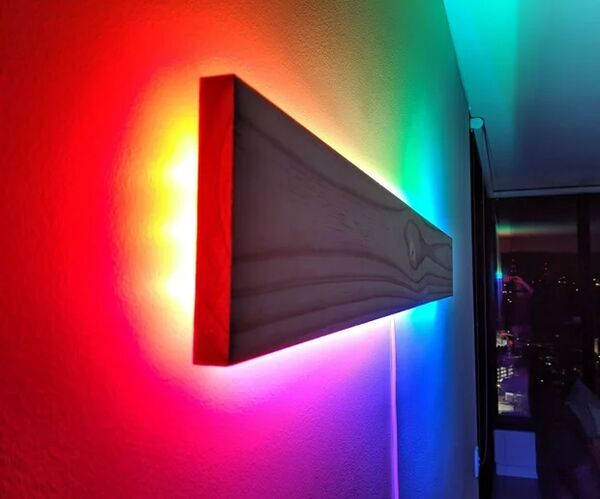
Super Simple RGB WiFi Lamp
"This project started when my girlfriend was complaining about the large empty feature wall of our new apartment. Since we both decided to hang something up there, I knew I wanted to put something of my own design up there. I started researching for inspiration across the and ended up reading a lot of Instructables which are pretty amazing, with some unique and beautiful designs. But what I kept finding is that most require either expensive tools such as 3D printers and CNC routers, or items that are highly specific to their design like old lamp shades or car bumpers for example. I have many of these great tools available to me since I am a development engineer in heavy industry. But I wanted to challenge myself and build the most Super Simple WiFi RGB LED Lamp that anyone can build." [...]

Video Streaming Server on ESP32-CAM
"In this tutorial, I'll show that how can we make an ESP32-CAM based video server which can be hosted on a local server. This project is sponsored by LCSC. I have been using electronic components from LCSC.com. LCSC has a strong commitment to offering a wide selection of genuine, high quality electronic components at best price with a global shipping network to over 200 countries. Sign up today and get $8 off on your first order. We can set up a video streaming web server with face recognition and detection in less than 5 minutes with Arduino IDE." [...]

Useless Box V1
"A useless box is a device which has a function but no direct purpose. It may be intended to make a philosophical point, as an amusing engineering "hack", or as an intellectual joke. Devices which have no function or which malfunction are not considered to be "useless box". The most well-known "useless box" are those inspired by Marvin Minsky's design, in which the device's sole function is to switch itself off by operating its own "off" switch. More elaborate devices and novelty toys, having some obvious function or entertainment value, have been based on these simple "useless box". Source https://en.wikipedia.org/wiki/Useless_machine Today I am going to share how to make one" [...]
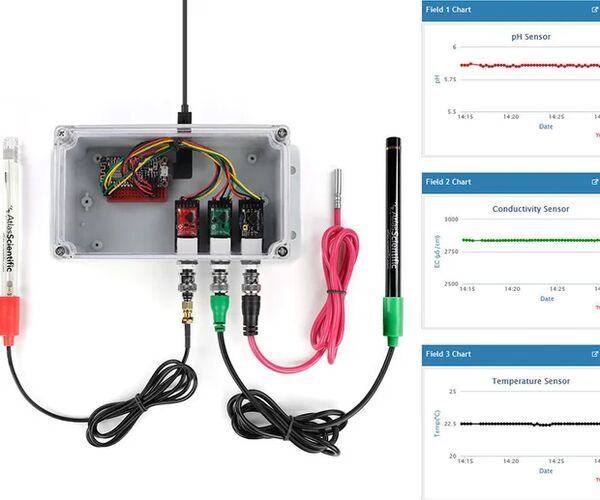
Wifi Hydroponics Meter
"In this project, we will be making a wifi capable meter that measures pH, conductivity, and temperature using the Adafruit feather Huzzah Esp8266 module and sensors from Atlas Scientific. The data is uploaded to the ThingSpeak platform where monitoring and analysis can be performed. Additionally, the mobile application ThingView will be used to view sensor data. MATERIALS Wifi Hydroponics Meter Kit (The kit includes all the necessary components needed to build this meter. Some benefits of getting the kit: overall lower cost, no soldering required and the holes on the enclosure are pre-made. The option is also available to purchase the individual components which are listed below) 1 - Adafruit Feather Huzzah ESP8266 1 - EZO pH circuit 1 - pH probe 1 - EZO conductivity circuit 1 - K1 conductivity probe 1 - EZO temperature circuit 1 - PT-1000 temp probe 1 - Non-isolated carrier board 2 - Isolated carrier boards 1 - Mini breadboard 1 - 158x90x60mm Enclosure Calibration solutions: pH4, pH7, pH10, 12880µS and 80000µS Jumper wires Male Micro-B USB to male USB-A cable 5V 1A wall adapter (the wall adapter is used with the USB cable to power the meter remotely) Left 90 degree angle micro USB male to micro USB female adapter." [...]
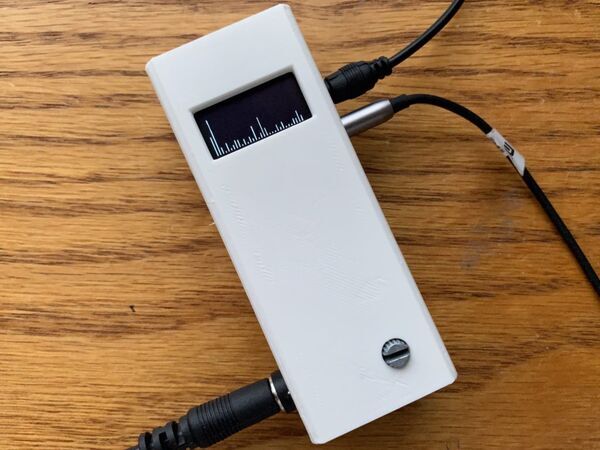
32 Band Audio Spectrum Analyzer Using Oled Display And Attiny85
"Visualizations are an important part of a music player. They provide the user with something to feast their eyes on especially when the music has no video. For today’s tutorial, we will build a visualization device, capable of providing a visual representation for any kind of music fed into it. Visualizations are an important part of a music player. They provide the user with something to feast their eyes on especially when the music has no video. For today’s tutorial, we will build a visualization device, capable of providing a visual representation for any kind of music fed into it." [...]
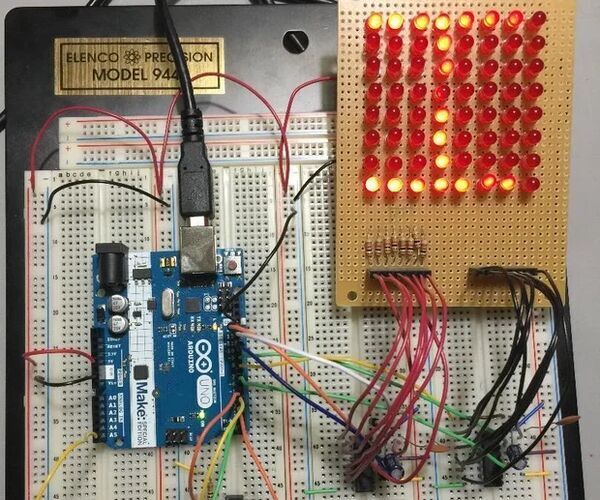
Pushbutton LED Matrix
"This project can be thought of as another introductory Arduino project that is slightly more advanced than your typical 'blinking an LED' project. This project incorporates an LED matrix, pushbuttons, shift registers (which can save pins on your Arduino board), and a key concept called multiplexing. I hope you find the tutorial enlightening and challenge yourself to improve upon it! Supplies: - (1x) Arduino Uno - (5x) Tactile Pushbuttons - (2x) 0.1 uF Capacitors - (2x) 1 uF Capacitors - (8x) 1k Resistors - (5x) 10k Resistors - (2x) 74HC595 shift registers - Jumper Wires - Black Wire - Red Wire" [...]
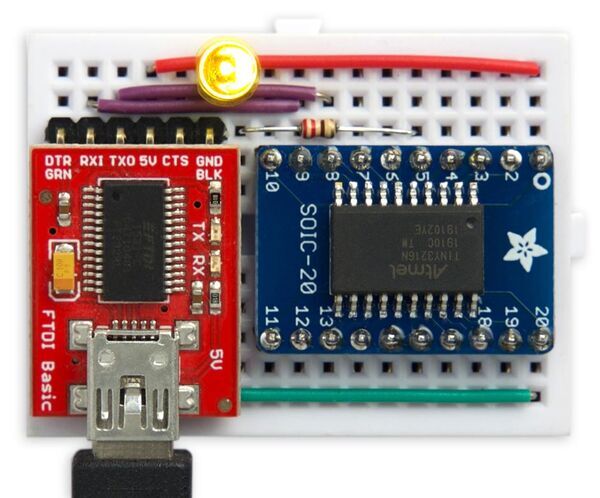
ATtiny Running Lisp
"This project describes how to run programs in the high-level language Lisp on a Microchip ATtiny 3216 microcontroller costing just over a dollar. It uses my Lisp interpreter for microcontrollers, uLisp. " [...]

Spring Making / Wire Bending Machine
"Wire bending CNC machine with precision to make springs! Well, this machine is not only about making springs. It is a wire bending machine capable of bending 0.8/0.9/1 mm wire into any 2D shape. But yeah, the coolest thing I was able to make with it so far was the spring. How cool is that? The main goal was to make it quite precise." [...]
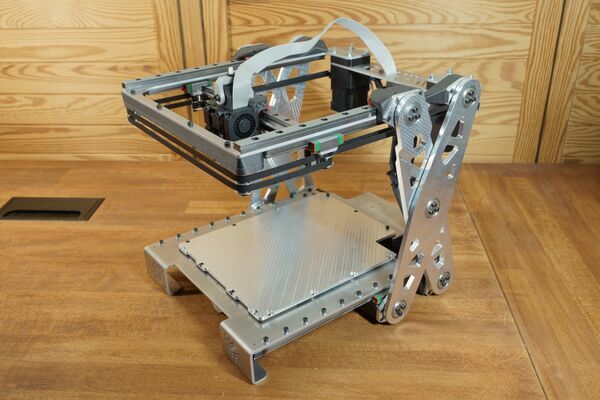
X printer - portable
"Portable CoreXY 3D printer(foldable) The 3D printer has a compact size so that it can fit in a large backpack. It was essential for me that the printer has a reasonable print volume despite the requirement to be portable. The outer dimensions are 300x330x105mm (folded), and the build volume will be 160x220x150mm (XYZ). As you can see in the renderings, the printer will unfold during printing. The printer will be built out of CNC machined aluminum parts and 3d printed ones. I chose aluminum in the first place because I wanted to build the printer as rigid as possible (proof of concept)." [...]
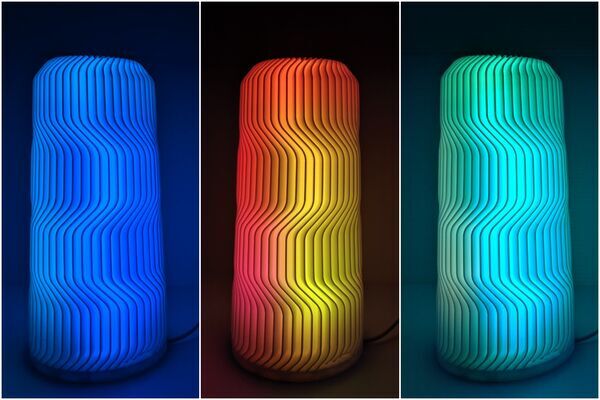
Building a micro:bit gesture controlled lamp
"Recently I attended the hacker camp Chaos Communication Camp which really got me motivated to get creative again with building side projects and specifically ones which GLOW because what’s the point of a hardware project if it doesn’t glow? I decided on building myself a lamp using the BBC micro:bit as it’s this super simple microcontroller made for children and comes jam packed with a bunch of sensors and best of all - can be programmed using MicroPython. Hardware - 1x BBC micro:bit used for super simple gesture controls. The programming of the micro:bit is unbelievably simple and has a whole bunch of sensors built in for future upgrades I could possibly make to this project. - 1x ATMEGA328 5V 16MHz Arduino (basically a knockoff Arduino Pro Mini) used for controlling the neopixels as the micro:bit cannot run regular Arduino code with third party libraries so a simple arduino was needed to act as an interface between the micro:bit and Neopixels. - 8x NeoPixel Sticks & 1x NeoPixel Ring for providing super high quality LEDs to the project." [...]
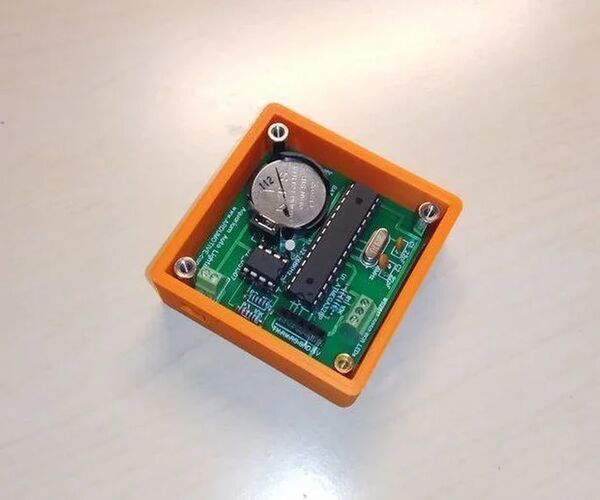
Aquarium Auto Lighting System
"In this DIY guide I will show you how to make your own Arduino aquarium auto lighting system. In this project I decided to make my own PCB that is based on Arduino UNO microcontroller - Atmega328p. Bellow you will find the electronic schematic with PCB layout so you can easily produce it. The current time can be set for the first time (or when the coin battery is low) via the serial monitor. You can change the lighting change time or led color from code. ~Project updates can be found here: https://www.ardumotive.com/arduino-aquarium-auto-l... ~Watch the video below: " [...]
That's all Folks!



